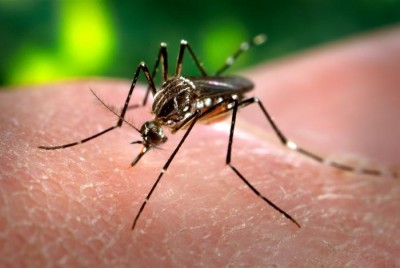Brazil’s Genetically Modified Mosquitoes

According to an incisive report by Deutsche Welle, “genetically modified mosquitoes are currently breeding in Brazil”.
Under the researchers’ original plan, “all released mosquitoes and their offspring should have died.” But that did not happen.
” An attempt to contain the populations of the yellow fever mosquito Aedes aegypti in Brazil may have failed. It appears that gene mutations have been transferred to the local population.”
The British company Oxitec had released about 450,000 male mosquitoes every week in the city of Jacobina in the Bahia region with official permission over a period of 27 weeks. The experiment was designed to control the infectious diseases dengue, zika and yellow fever.
The gene modification called OX513A in the mosquitoes was designed in such a way that the first descendant generation of the mosquitoes, known as F1, would not reach the adult stage and thus not be able to reproduce.
The gene modification of the released mosquitoes also produced a fluorescent protein that made it possible to distinguish the first F1 generation from other mosquitoes.
Researchers at Yale University have examined the mosquitoes found in the region for their genetic alterations one year after the release, as well as 27 to 30 months after the release.
They came to the conclusion that parts of the gene alteration had unexpectedly migrated into the target population of local mosquitoes. Deutsche Welle
Was it “unexpected”?
The gene modification was in theory intended to contain the yellow fever Aedes aegypti mosquito as well as the transmission of dengue, yellow fever and zika.
In some regards it had exactly the opposite results. The process of gene modification was passed on to the broader aegypti target mosquito population.
Below are excerpts from the study published in Nature: Scientific Reports on September 10.
***
Transgenic Aedes Aegypti Mosquitoes Transfer Genes into a Natural Population
Abstract
In an attempt to control the mosquito-borne diseases yellow fever, dengue, chikungunya, and Zika fevers, a strain of transgenically modified Aedes aegypti mosquitoes containing a dominant lethal gene has been developed by a commercial company, Oxitec Ltd.
If lethality is complete, releasing this strain should only reduce population size and not affect the genetics of the target populations.
Approximately 450 thousand males of this strain were released each week for 27 months in Jacobina, Bahia, Brazil.
We genotyped the release strain and the target Jacobina population before releases began for >21,000 single nucleotide polymorphisms (SNPs). Genetic sampling from the target population six, 12, and 27–30 months after releases commenced provides clear evidence that portions of the transgenic strain genome have been incorporated into the target population.
Evidently, rare viable hybrid offspring between the release strain and the Jacobina population are sufficiently robust to be able to reproduce in nature. The release strain was developed using a strain originally from Cuba, then outcrossed to a Mexican population.
Thus, Jacobina Ae. aegypti are now a mix of three populations. It is unclear how this may affect disease transmission or affect other efforts to control these dangerous vectors. These results highlight the importance of having in place a genetic monitoring program during such releases to detect un-anticipated outcomes.
Introduction
Mosquito-borne diseases take a tremendous toll on human health and economies especially in Third World countries. Effective vaccines and drugs are available for only a few so the major means of controlling these diseases is to control the mosquitoes that transmit them. As traditional methods of control, such as insecticides, have become less effective and acceptable, alternative methods have been sought1. Methods based on genetic manipulations are among the most appealing and actively pursued2. One such genetic-based program has involved releasing a strain of Aedes aegypti (OX513A) that was transgenically modified to be homozygous for a conditional dominant lethal3,4.
This strain also carries a fluorescent protein gene that allows detection of OX513A X wild type F1offspring. Release of this strain in large numbers has been effective in reducing populations of Ae. aegypti by up to 85%5. The largest such releases to date have been carried out in the city of Jacobina in Bahia, Brazil6. We monitored the Jacobina Ae. aegypti population to determine if the releases have affected the genetics of the natural population by transferring genes, introgressing.
If lethality is complete, such releases should result only in population reduction and not affect the genetics of the target population. However, it is known that, under laboratory conditions, 3–4% of the offspring from matings of OX513A with wild type do survive to adulthood although they are weak and it is not known if they are fertile4.
Read the full report here.
*
Note to readers: please click the share buttons above or below. Forward this article to your email lists. Crosspost on your blog site, internet forums. etc.

